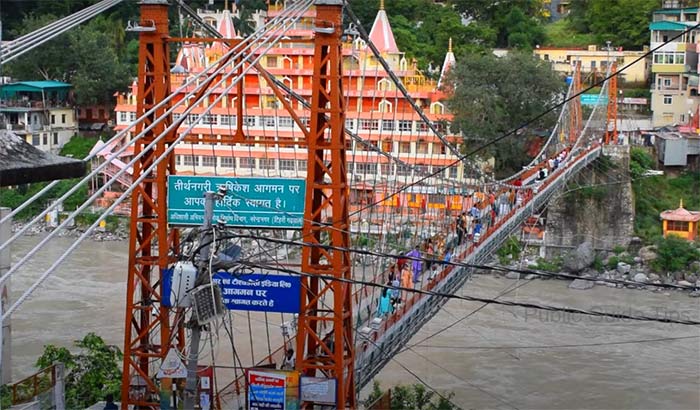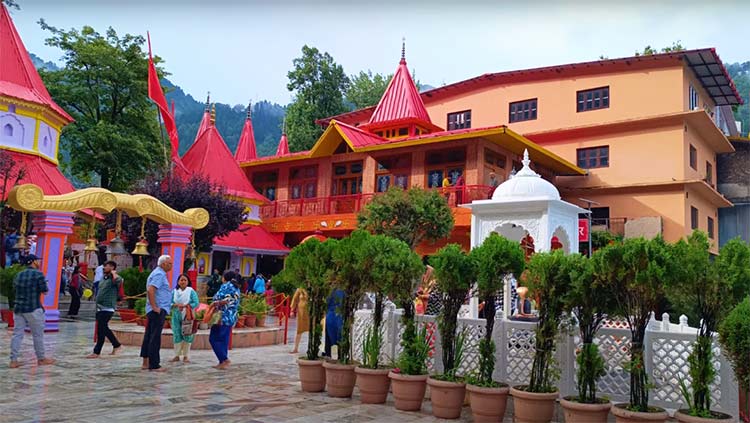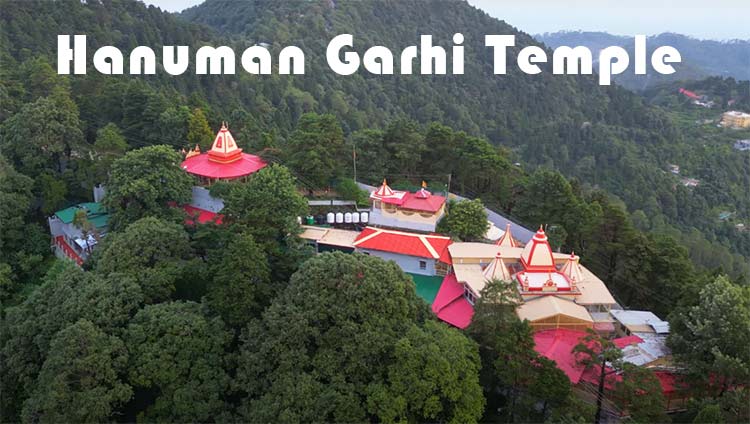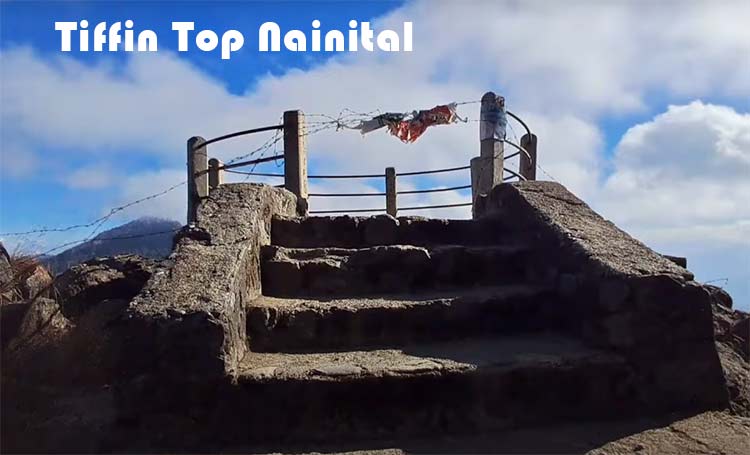The Lakshman Jhula is a famous old bridge in India. It goes over the Ganga River, which many people think is holy. You can walk on this bridge, and it’s near a town called Rishikesh in the state of Uttarakhand. The bridge is very important to the town and many people know about it.

Where is the Lakshman Jhula?
If you want to find the Lakshman Jhula, you need to go to Rishikesh first. From there, go about 5 kilometers (that’s about 3 miles) to the northeast. The bridge is on the edge of the town. It connects two small villages: Tapovan on the west side of the river and Jonk on the east side. These villages are in different areas called districts. Tapovan is in the Tehri Garhwal district, and Jonk is in the Pauri Garhwal district.
The Story Behind the Name
There’s an old story about why the bridge is called Lakshman Jhula. People say that a long, long time ago, a god named Lakshmana crossed the Ganga River at this spot. But he didn’t use a bridge – he used ropes! That’s why they named the bridge after him.
The History of the Bridge
The Lakshman Jhula we see today isn’t the first bridge at this spot. Let’s look at its history:
The First Bridge: A long time ago, there was a smaller bridge here. It was 284 feet long and was a gift from a man named Rai Bahadur Surajmal Jhunjhunwala.
The Big Flood: In October 1924, there was a very big flood. It was so strong that it destroyed the old bridge.
Building the New Bridge: After the flood, people decided to build a new, stronger bridge. The Public Works Department started building it in 1927.
Finishing the Bridge: It took about two years to build the new Lakshman Jhula. They finished it in 1929.
Opening Day: On April 11, 1930, a man named Sir Malcolm Haley, who was the Governor, opened the bridge for everyone to use.
What the Bridge Looks Like
The Lakshman Jhula is pretty big:
It’s 450 feet long (that’s longer than a football field!)
It’s 6 feet wide (about as wide as a big car)
It’s 59 feet above the river in summer when the water is at its normal level
When it was first built, it was special because it was the first bridge in that part of India (called Uttar Pradesh back then) that cars could drive on.
Who Built the Bridge?
Many people worked hard to build the Lakshman Jhula. Here are some of the important people:
P. H. Tillard was the Head Engineer
E. H. Cornelius was the Manager Engineer
C. F. Hunter was the Main Engineer
Jagdish Prasad and Avadh Narain were Helper Engineers
A Special Gift
The new Lakshman Jhula was more expensive to build than the old one. A man named Rai Bahadur Shewpershad Tulshan paid the extra money. He did this to remember his father, who had given the first bridge as a gift. Because of this, no one has to pay money to walk on the bridge. It’s free for everyone, forever!
The Bridge Today
For a long time, people could walk or ride motorcycles on the Lakshman Jhula. But things have changed:
Since November 5, 2020, only people can walk on the bridge. No motorcycles or other vehicles are allowed.
There are barriers at both ends of the bridge to stop vehicles from going on it.
The bridge is getting old, and people are worried about how safe it is.
The government plans to build a new bridge next to the old Lakshman Jhula.
When the new bridge is ready, they will close the old Lakshman Jhula for good.
Other Bridges Nearby
If you visit Rishikesh, you might also see another big bridge. It’s called Ram Jhula and it’s about 2 kilometers (or 1.2 miles) down the river from Lakshman Jhula. Ram Jhula is newer and bigger than Lakshman Jhula.
Why the Lakshman Jhula is Important
Even though it’s closed to vehicles now, the Lakshman Jhula is still very important to Rishikesh. It’s more than just a way to cross the river. It’s a piece of history that reminds people of old stories and the hard work of those who built it. Many people come from far away just to see this famous bridge.
How to Reach Lakshman Jhula
Address: Lakshman Jhula, Taxi Stand, Rishikesh, Jonk, Uttarakhand 249302
Latitude -30.1262° N, Longitude – 78.3308° E
By Air
Nearest Airport: Jolly Grant Airport (Dehradun)
Distance: Approximately 20 kilometers (12 miles) from Rishikesh.
Transport Options:
- Taxi or cab services are available from the airport to Rishikesh.
- Travel time: About 30-45 minutes.
By Train
Nearest Railway Station: Rishikesh Railway Station
Distance: About 3 kilometers (2 miles) from Lakshman Jhula.
Transport Options:
- Auto-rickshaws or taxis are available from the station.
- Travel time: Approximately 10 minutes.
By Bus
Bus Stand: Rishikesh Bus Stand
Distance: Around 5 kilometers (3 miles) from Lakshman Jhula.
Transport Options:
- Auto-rickshaws or taxis can be hired from the bus stand.
- Travel time: Around 15 minutes.
By Car
From Dehradun:
Distance: Approximately 45 kilometers (28 miles).
Route: Take NH 7 or the Dehradun-Rishikesh road to reach Rishikesh.
Parking: There are parking facilities near the Taxi Stand at Lakshman Jhula.
Local Transport
Taxi Stand: Located at Lakshman Jhula itself.
From Rishikesh Town:
- You can hire a local taxi or auto-rickshaw to reach Lakshman Jhula.
- Travel time: Around 10-20 minutes depending on traffic.
Walking
If you are staying close to the area or prefer to explore on foot, Lakshman Jhula is a popular destination and can be reached easily by walking from nearby accommodations or landmarks.
FAQ
A historic suspension bridge in Rishikesh, Uttarakhand, spanning the Ganga River.
In Rishikesh, about 5 kilometers northeast of the town center, connecting Tapovan and Jonk.
Named after the deity Lakshmana, who, according to legend, crossed the Ganga River here using ropes.
First Bridge: Gifted in 284 feet long by Rai Bahadur Surajmal Jhunjhunwala.
Flood: Destroyed in 1924.
New Bridge: Built from 1927-1929, opened in 1930.
Length: 450 feet
Width: 6 feet
Height Above River: 59 feet
Engineers P. H. Tillard, E. H. Cornelius, C. F. Hunter, Jagdish Prasad, and Avadh Narain.
Yes, Rai Bahadur Shewpershad Tulshan funded the extra costs, ensuring free public access.
No, it’s now pedestrian-only as of November 5, 2020.
A new bridge is being planned, and the old one will be closed once it’s completed.
Yes, Ram Jhula is located about 2 kilometers downstream.
It’s a historic and cultural landmark, symbolizing the region’s heritage and engineering achievements.
You can discover additional Tourist Attractions by clicking the link below
Tourist attractions in Rishikesh



